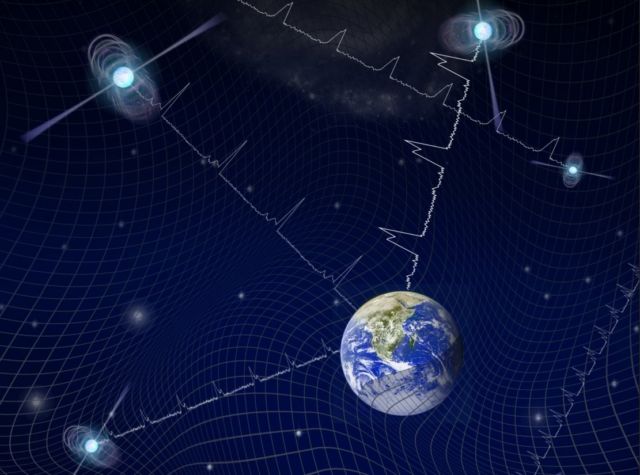Scientists used ‘Galaxy-sized’ observatory to see potential hints of gravitational waves.
Astronomers have used a “galaxy-sized” space observatory to find possible hints of a unique signal from gravitational waves, or the powerful ripples that course through the universe and warp the fabric of space and time itself.
For over 13 years, NANOGrav researchers have pored over the light streaming from dozens of pulsars spread throughout the Milky Way Galaxy to try to detect a “gravitational wave background.” That’s what scientists call the steady flux of gravitational radiation that, according to theory, washes over Earth on a constant basis. The team hasn’t yet pinpointed that target, but it’s getting closer than ever before, said Joseph Simon, an astrophysicist at the University of Colorado Boulder and lead author of the new paper.
“We’ve found a strong signal in our dataset,” said Simon, a postdoctoral researcher in the Department of Astrophysical and Planetary Sciences. “But we can’t say yet that this is the gravitational wave background.”
 Graphic showing pulsar light traveling to Earth amid a sea of gravitational waves. Credit: NANOGrav/T. Klein
Graphic showing pulsar light traveling to Earth amid a sea of gravitational waves. Credit: NANOGrav/T. Klein
In 2017, scientists on an experiment called the Laser Interferometer Gravitational-Wave Observatory (LIGO) won the Nobel Prize in Physics for the first-ever direct detection of gravitational waves. Those waves were created when two black holes slammed into each other roughly 130 million lightyears from Earth, generating a cosmic shock that spread to our own solar system.
Top image: A pulsar ejecting a plume of energy. Credit: NASA/HST/ASU/J. Hester et al.
The new findings, which appeared recently in The Astrophysical Journal Letters, hail from a U.S. and Canadian project called the North American Nanohertz Observatory for Gravitational Waves (NANOGrav).
source University of Colorado Boulder






Leave A Comment